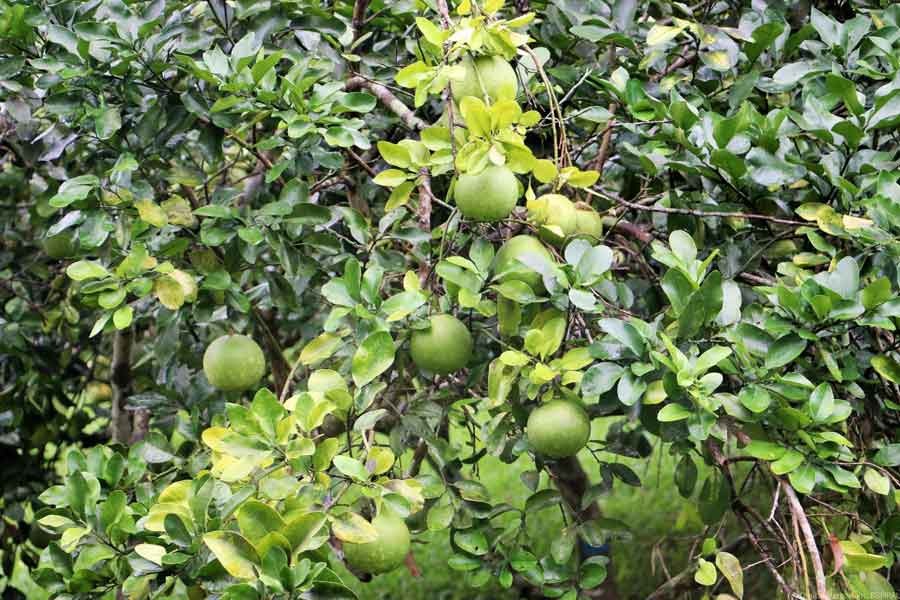Both metro rail and the germplasm centre are important for the nation. They are not rivals to each other and interests should not clash. All that is needed is to reconsider the place for temporary construction site of the metro rail. There is need for coordination between ministries in this regard, suggests Nilratan Halder
Called Falbithi (fruit orchard) Germplasm Centre, the conservation garden located at the south-west tip of the old runway at Tejgaon has not drawn much popular attention. But it is a botanical treasure trove by all means. With 739 fruit trees of an array of species and many species of different varieties, the conservation garden is not like any other ordinary botanical garden or arboretum. Run by the agriculture extension department centre, it has amazing feats to its credit so far as production of foods in the country is concerned. Not only has it immensely contributed to agricultural economy by enhancing production of local varieties of fruits but also by introducing some of the exotic types brought to the country for their naturalisation here.
Now the highly important arboretum with a difference is under threat, according to reports carried in a few daily newspapers on August 10 and 13 last. Mokaram Hossain, a naturalist, has expressed his deep concern over the threat posed to the germplasm centre through a write-up published in a Bangla contemporary. Many environmental activists may have missed the news. Or else, reactions to this disconcerting development would have been sharp.
The threat comes from an insensitive quarter with the metro rail authority eying the land of the germplasm centre as their temporary construction yard. If the land is selected for the purpose, 80 per cent of the trees of the centre will have to be felled. The rest 20 per cent of the trees will be destroyed on account of the hectic construction works there.
Under the directive of the president's secretariat, a total of five-acre land in its present location was allotted in early 90's for developing this representative garden centrally. Another executive order issued by the Prime Minister's Office (PMO) in the year 2000 has reportedly stipulated the need for preservation of the garden and continuation of its regular activities.
Agriculture scientists involved with research have devoted themselves to develop a bank of living trees which can act as the original source for a host of indigenous fruit trees. If certain fruit tree somehow becomes extinct, this germplasn centre can save it from extinction. It can develop plants at the centre and distribute those for their survival for the posterity. There are altogether 67 types of fruit trees of 265 varieties. The number of such fruit trees thus comes to 739. The living storage was expected to be richer with time. Already a few exotic trees have adorned the garden and more could join their ranks.
There are a few rare trees which, if die or are destroyed, will disappear from the country forever. Research and experiment are continuously carried on here in order to breed developed or quality species and high-yielding varieties. Interns of agriculture study also get an opportunity for a hand-on experiment here. The value of this centre cannot be measured in money terms. Yet the sale proceeds from grafted and natural plants are not negligible. Annually, the centre earns millions of taka from such sales. But its greatest achievement is the contribution to the country's agriculture, without which the nation would have to be satisfied with poorer nutritional dishes on a daily basis.
When so much is at stake, it is irrational to select this location as the construction yard of the metro rail. It will, moreover, be a temporary one. So there is no point destroying the germplasm garden for a temporary construction yard. Reason dictates that the yard be placed at some other place. Maybe, the metro rail authority is not aware of the enormous significance of the plasm centre. If they know about its importance, they would look for a different site where it will be quite convenient for them to work and would not require mayhem of precious trees. There are vacant spaces nearby. The runway is stretched to the north where there is ample space. Then the site for international trade fair has sprawling space. This can as well be used for the purpose.
Both metro rail and the germplasm centre are important for the nation. They are not rivals to each other and interests should not clash. All that is needed is to reconsider the place for temporary construction site of the metro rail. There is need for coordination between ministries in this regard. One must not prevail on another for temporary gains.
Sure enough addition of metro rail or any such transportation facility to the capital's infrastructure will be welcome with open arms, given the ordeals commuters here have to go through routinely. This, however, should not blind the policymakers and others involved with construction of such infrastructure of the need for preserving bio-diversity of the land. Along with bio-diversity, the germplasm centre holds the key to sustaining growth of agriculture through fruit production.
The centre has been developed as the nation's central repository of plant varieties of fruits. It must be preserved at any cost in order to secure the nation's nutritional supply in the future. Agriculture scientists are expected to build on the success they have already achieved in this regard. It must not be disturbed. Any serious disruption on account of unwanted interference, as apprehended, would prove retrogressive to their progress.


